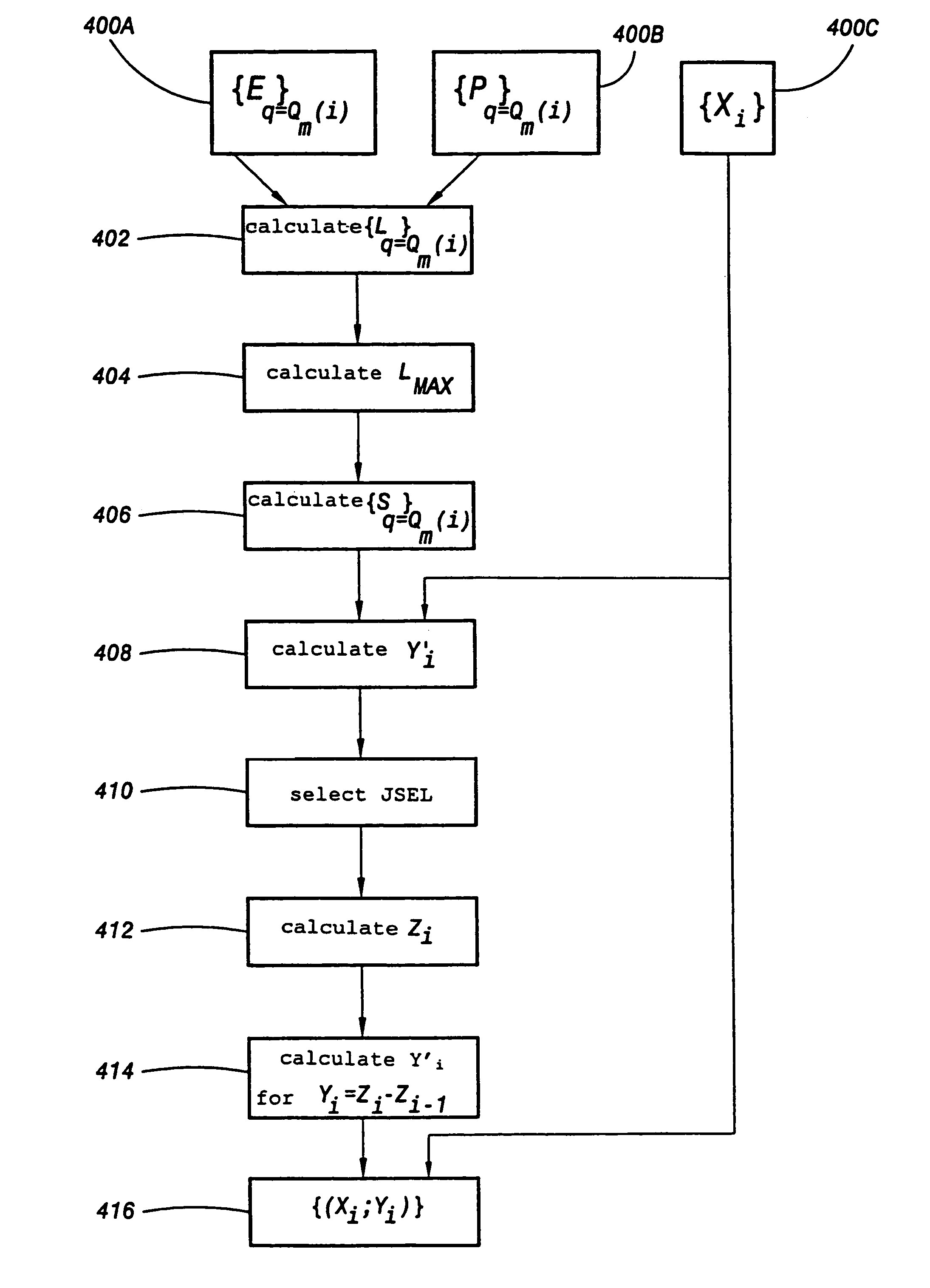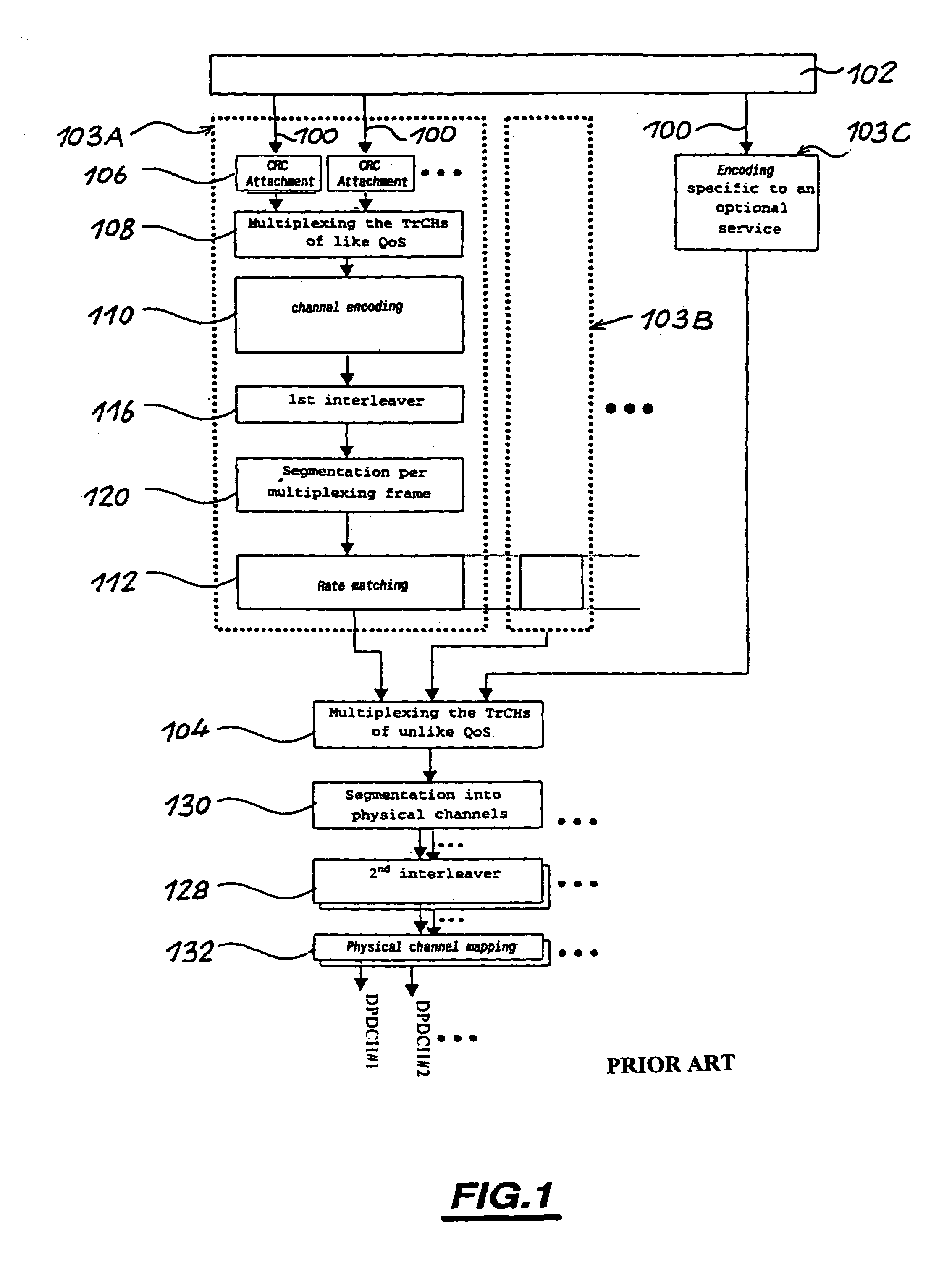Method for balancing the ratio EB/I in a service multiplexing CDMA system and telecommunication systems using same
a technology of cdma system and ratio, applied in the direction of channel coding adaptation, data switching network, coding, etc., can solve the problems of inability to meet the needs of coding, and inability to meet the requirements of coding
- Summary
- Abstract
- Description
- Claims
- Application Information
AI Technical Summary
Benefits of technology
Problems solved by technology
Method used
Image
Examples
Embodiment Construction
[0119]Generally, in the invention each quality of service is characterized by two integer numbers E and P. E corresponds to the ratio Eb / I, that is to say if there are several qualities of service labelled 1, 2, . . . , p, whose respective coefficients E are labelled E1, E2, . . . , Ep, then the ratios Eb / I of each quality of service will be in the same proportions as the coefficients Ei.
[0120]The coefficient P corresponds to the maximum puncture rate which is admissible for a given quality of service. Thus, for each quality of service 1, 2, . . . , p, there is associated a maximum puncture rate labelled P1, P2, . . . , Pp. The maximum puncture rate is imposed by the channel coding implemented within the processing chain specific to the relevant quality of service. Puncturing consists in deleting coded bits. This deletion is tolerable insofar as the channel coding introduces a redundancy. However, the number of punctured bits must not be too large relative to the total number of bit...
PUM
 Login to View More
Login to View More Abstract
Description
Claims
Application Information
 Login to View More
Login to View More - R&D
- Intellectual Property
- Life Sciences
- Materials
- Tech Scout
- Unparalleled Data Quality
- Higher Quality Content
- 60% Fewer Hallucinations
Browse by: Latest US Patents, China's latest patents, Technical Efficacy Thesaurus, Application Domain, Technology Topic, Popular Technical Reports.
© 2025 PatSnap. All rights reserved.Legal|Privacy policy|Modern Slavery Act Transparency Statement|Sitemap|About US| Contact US: help@patsnap.com



